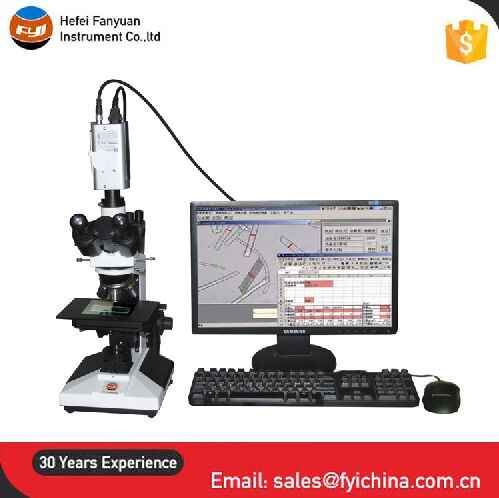Enhance Your Fiber Optic Projects With a Reliable Diameter Analyser
The integration of an efficient diameter analyser into fibre optic projects serves as a pivotal component in attaining accuracy and uniformity. By assisting in accurate size dimensions, these analysers not just improve the high quality of setups but also minimize prospective compatibility problems amongst elements. The advanced capacities of modern-day analysers enhance data collection and quality control procedures. As we explore the important features and advantages of these tools, it comes to be obvious exactly how they can change job outcomes and make certain adherence to market standards. What continues to be to be gone over is exactly how to effectively execute these analysers in your existing workflows.
Relevance of Diameter Dimension
Determining the size of fiber optic cables is an important task that makes sure optimal performance and dependability in communication systems. Precise diameter measurement is essential for various reasons, primarily for keeping signal honesty and lessening loss. A cord's diameter directly influences its ability to transmit light effectively; deviations from the specified diameter can lead to raised attenuation, which affects the overall efficiency of the network.
Moreover, exact measurement is essential during the setup and maintenance of fiber optic systems. An inappropriate fit between wires and ports can result in signal destruction or total failure of communication links. By making certain that sizes are within specified resistances, service technicians can improve compatibility between parts, resulting in improved system integrity.
Furthermore, size dimension plays a significant duty in quality assurance during production. Consistency in the size of fibre optic wires is crucial for guaranteeing consistent performance throughout various batches. optical fibre diameter analyser. This uniformity helps makers maintain market standards and promotes self-confidence among end-users
Attributes of an Efficient Analyser
A reliable analyser for fibre optic jobs have to integrate numerous key functions that improve precision and functionality in size measurement. To start with, high-resolution optical sensors are essential for exact size readings, allowing individuals to detect even the least variations in fibre density. These sensing units should be matched by innovative calibration systems, making certain regular performance across various problems and products.
Second of all, an user-friendly interface is critical for helping with simplicity of procedure. This includes instinctive software application that enables seamless data input and result, together with graphes of the measurements taken. A mobile design boosts usability in various area settings, making it simpler to carry out assessments on-site.
Additionally, the analyser needs to support several dimension settings, fitting numerous fiber types and applications. The ability to shop and get historical information is an additional vital function, allowing customers to track performance in time and make informed choices.
Advantages for Fiber Optic Projects
Carrying out a diameter analyser in fiber optic projects provides significant benefits that substantially improve project effectiveness and quality. One of the key benefits is the capability to make certain specific dimensions of fiber size, which is essential for preserving optimal efficiency in fibre optic systems. Accurate diameter readings assist in the recognition of disparities that can lead to signal degradation or loss, hence making certain top quality transmission.
In addition, the usage of a diameter analyser improves the quality control procedure. By automating dimension tasks, task groups can minimize the time invested on hand-operated inspections, leading to faster project completion and minimized labour expenses. This efficiency also permits even more extensive screening protocols, causing improved item dependability.
Additionally, uniformity in fiber diameter dimensions advertises compatibility with other fibre optic elements, minimizing the danger of installment mistakes and improving overall system performance. The consolidation of a diameter analyser not only aids in keeping market criteria yet additionally promotes confidence in job deliverables.
Assimilation Into Existing Operations
Incorporating a size analyser into existing process can dramatically boost the operational efficiency of fiber optic tasks. By seamlessly including this modern technology, groups can achieve precise dimensions that are important to preserving the honesty and performance of fibre optic systems. This combination permits for real-time data collection and analysis, more info here which can be vital throughout the production and installment stages.
Moreover, the ability to automate diameter dimension processes reduces the possibility for human error, guaranteeing regular quality assurance throughout the task lifecycle. The data created can be easily shared throughout systems, helping with collaboration among engineers, service technicians, and project managers. This access improves decision-making and increases job timelines.

Selecting the Right Diameter Analyser
When picking a diameter analyser for fibre optic projects, it is important to think about several essential elements that directly influence measurement precision and operational effectiveness. First, the resolution and precision of the analyser should align with the specific needs of your job. Greater resolution instruments can identify minute variants in size, which is essential for making sure optimum efficiency in fibre optic systems.
Next, assess the rate of dimension. For jobs with tight target dates, a size analyser that supplies quick data acquisition can significantly boost productivity. Furthermore, consider the analyser's compatibility with existing systems and software application. A seamless assimilation minimizes configuration time and lessens disturbances during operations.
An additional essential aspect is the variety of diameters the analyser can accommodate. By carefully reviewing these factors, you can pick a size analyser that improves the effectiveness and accuracy of your fiber optic tasks.
Final Thought
In conclusion, the combination of an efficient size analyser is additional reading paramount for improving fibre optic jobs. Exact size measurements make sure optimum performance and integrity while minimizing setup mistakes (optical fibre diameter analyser).
A cable television's size straight influences its capability to transmit light effectively; deviations from the defined size can lead to enhanced attenuation, which influences the general performance of the network.
